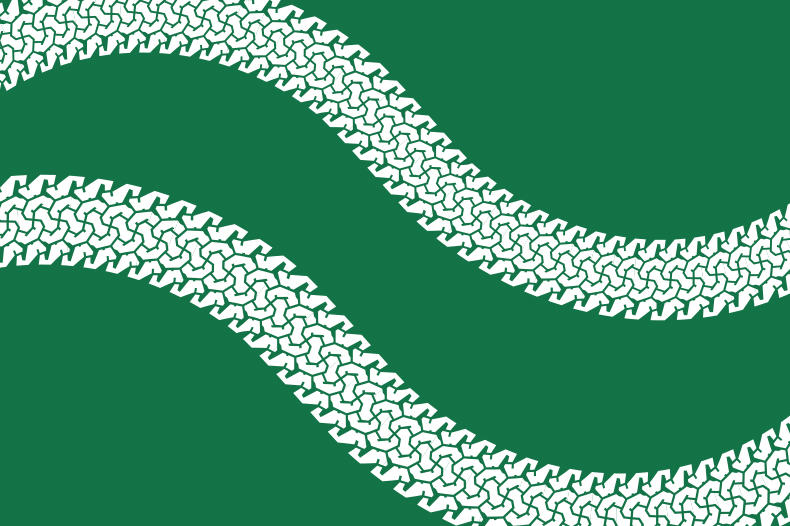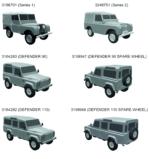Road to refusal
Adam Kellett finds this decision a useful guide to shape mark obstacles. O/589/19, 3D Marks (Oppositions), UK IPO, 3rd October 2019

This case concerns six trade mark applications filed by Jaguar Land Rover Ltd (JLR), to register the shapes of its Series 1, Series 2 and Defender cars in the UK. The applications covered a range of goods and services in classes 9, 12, 14, 28 and 37.
JLR successfully overcame descriptiveness and non-distinctiveness objections during examination. However, the applications were then opposed on numerous grounds by Ineos Industries Holdings Ltd (Ineos), a company that wished to produce cars in the shape(s) of JLR’s discontinued Defenders. The Oppositions were consolidated.
Sections 3(1)(b) and (c)

With reference to The London Taxi Corporation Ltd v Fraser-Nash Research Ltd and Another [2017] EWCA 1729 (Civ), the Hearing Officer (HO) considered whether the shapes, when viewed in their entireties, depart significantly from the norms and customs in the passenger car sector.
The assessment focused, in particular, on features that render the shapes “boxy” and counter-aerodynamic, and on the Defender vehicles’ “arrow-shot” and “alpine” windows.
When compared in their entireties against the vehicles of third parties, the HO determined that while the Defender shapes have some “unusual” features, these are merely “minor variations” from the norms. Accordingly, all of the shapes were found to be devoid of inherent distinctive character for (land-based) vehicles.
The fact that the vehicles look “old-fashioned” was considered relevant. However, on the basis that consumers are “well aware” of “retro” designs, the HO did not consider this enough to find that the shapes depart significantly from the norms.
The HO found the marks non-distinctive for toys and models, which can assume the shapes of cars, and that the shapes may indicate the intended purpose of goods/services that relate to cars. Additionally, the HO found the marks non-distinctive for goods such as cufflinks and key rings, which can take the shapes of cars for decorative purposes.
However, the HO found the shapes to be inherently distinctive for statues and statuettes, which were deemed to typically take the form of people or animals, and for Christmas decorations, commenting: “There is nothing about [the shapes] which evokes Christmas.”
In addition to certain goods in classes 9 and 28, the HO found the marks to be inherently distinctive for “apparatus for locomotion by air and/or water” in class 12. This followed the General Court’s decision in Jaguar Land Rover v OHIM, T-629/14 that such shapes depart significantly from the norms and customs
for waterborne and airborne vehicles.
For the remaining goods, the HO found no evidence that the shapes had, per s3(1)(d), become customary in the bona fide and established practices of the trade. The HO also dismissed grounds under s3(1)(a) that the signs were not capable of being graphically represented or distinguishing the goods/services of a particular undertaking.
Acquired distinctiveness
JLR did not succeed in establishing that the shapes of its Series 1 and Series 2 cars had acquired distinctiveness through use. Sales of new cars had ceased 44 years earlier, and the (possibly incidental) presence of the cars in films and TV shows was not persuasive.
Sales of 136K Defender vehicles between 1994 and 2017 were deemed to represent a “tiny fraction” of the passenger car market in the UK, and only a “small proportion” of the 4x4/SUV sub-sector.
JLR presented survey evidence, from which the HO deduced that between 20 and 40 per cent of respondents were confident that the pictures they were shown depicted a Defender, representing a “significant but not overwhelming degree of recognition”. Evidence that third parties had sold cars based on the shapes, seemingly without confusion or objection by JLR, was influential.
The HO explained that it was not necessary for JLR to evidence that the shapes had, in the past, been used and relied on as trade marks absent LAND ROVER or DEFENDER. JLR simply needed to prove that a significant proportion of the relevant consumers would perceive the shapes alone as distinguishing its goods/services. Ultimately, the HO found that consumers rely primarily on the names of manufacturers and/or the model names of cars, rather than their shapes, and that the Defender shapes had not acquired distinctive character.
When assessing inherent and acquired distinctiveness, the HO expressed hesitance to place too much weight on the analyses and statements of design experts and motoring journalists, which were not deemed representative of the average consumer’s perspective.
Section 3(2) grounds
The HO determined that the shapes have essential characteristics that are not generic or likely to be sought in competitors’ products, and that are “counter functional” and/or possess a “residue of form over function”.
As to whether the shapes give substantial value to the goods, the HO commented that this was a “difficult and developing area of law” about which he was “reluctant to decide… without having heard the full argument”. Accordingly, the decision does not provide further insight into the application of this tricky ground.
Sections 3(3)(a) and 3(6)
Ineos essentially argued that JLR was seeking to misuse the trade mark system to contravene the time period restrictions of design law. The HO deemed this public policy ground “misconceived and unfounded”, on the basis that s3(2) safeguards against such concerns, and found there was no genuine and sufficiently serious threat to the interest of society. The HO likewise found no bad faith on that basis.
However, the HO did find bad faith for some goods, on the ground that JLR did not have a bona fide intention to use the marks. Despite having found the shapes to be inherently distinctive for “apparatus for locomotion by air and/or water”, the HO considered it “very unlikely, if not wholly implausible” that the shapes could be used for such goods, and therefore decided that protection was sought in bad faith. There may be some tension between these parts of the decision, though one supposes that an Applicant intending to use the shape of a car for an airborne or waterborne vehicle, such as an amphibious car, should be in a position to evidence this and thereby overcome a bad faith objection.
The decision provides a useful roadmap for the various grounds for refusal that may or may not apply to shape marks. It also provides further practical insight as to how unusual and/or widely recognised the shape of a product must be in order to attain registration as a trade mark.
Key points
- The HO found it unlikely or implausible that the Applicant could intend to use the shapes for airborne or waterborne vehicles, the only types of vehicles for which they were found inherently distinctive
- A 20-40 per cent rate of confident recognition was insufficient to convince the HO that the shapes were distinctive of the Applicant’s goods to a significant proportion of the relevant public
- An “old-fashioned” appearance is relevant when considering if a shape mark is inherently distinctive. However, this is by no means decisive, especially if consumers are particularly aware of “retro” designs in the relevant sector
More case comments:
Take two
There can be good reason to argue dual grounds, suggests Maya Muchemwa. O/1030/24, Baraqah Ltd v G & G Srl, UK IPO.
Who’s the boss?
Impressive evidence established the answer, writes Julia King. O/1028/24, Gym Boss Ltd v Hugo Boss Trade Mark Management GmbH & Co KG, UK IPO.
On the straight and narrow
The UK’s highest court brought closure to a persistent conflict, reports Antony Yerasimou. [2024] UKSC 36, SkyKick UK Ltd and another v Sky Ltd and others, Supreme Court.
Pet insurers put up a fight
Sarah Neil summarises a case that gives ‘paws’ for thought. [2024] EWCA Civ 1103, TVIS Ltd v Howserv Services Ltd and others, Court of Appeal.






